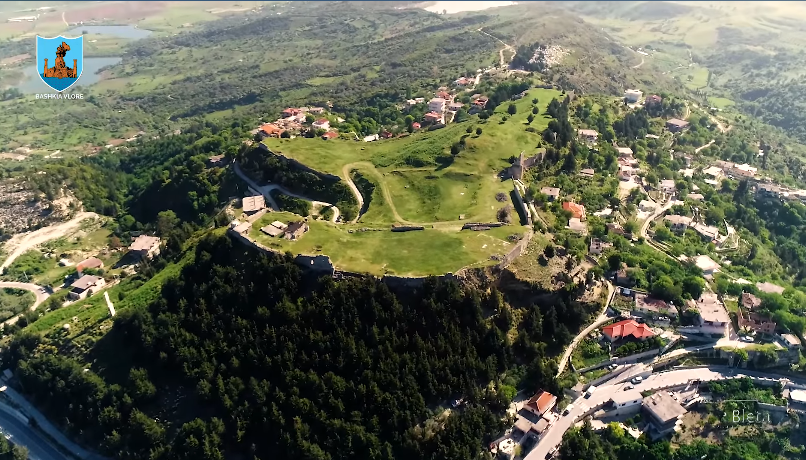The Castle of Kanina
The Castle of Kanina is a cultural heritage monument located in Kanina, in the district of Vlorë, in the Vlorë region of Albania. This monument is of the "Archaeological" type and was officially recognized with the number "Nr.95 Dt. 1.10.1948".
The Castle of Kanina is located 6 km from the city of Vlorë. This castle was mentioned as early as the 4th century, but traces have been discovered dating back to the Illyrian period, suggesting it might have been built in the 3rd century. It was later modified during the Byzantine, Venetian, and Ottoman periods. The castle was rebuilt by Justinian in the 5th century and restored by Sultan Suleiman in 1531. It stands on a hill 380 meters above sea level, covering an area of 3.6 hectares and offering a beautiful view of the city of Vlorë and its gulf.
In the middle of the Gulf of Vlorë, high mountains approach the coast, dividing it into two parts. In this area, slightly recessed inland, rises a hill 379 meters high, where the ruins of the ancient city of Kanina are located. Here, the valley of the Vlorë River extends to the base of the hill, facilitating the connection of the coastal area with the hinterland. This is an important factor, as to the south the mountains become very high, while to the north the distance between the coast and the valley of the Vlorë River increases rapidly. These conditions determine the strategic importance of Kanina, both for the passage from the southern to the northern part (and vice versa) and for the connection of the Vlorë River valley with the Gulf of Vlorë. Additionally, the surrounding hills create favorable conditions for the development of livestock, while to the east there are large and suitable lands for agriculture, thus complementing both the strategic and economic importance of the location.
These conditions favored the birth of a fortified center in this place since ancient times, whose life lasted almost uninterruptedly until the last century. Naturally, the role of this center has not always been the same, having had a leading role or being subordinated to other centers depending on the economic and social conditions of the various periods. Besides the strategic and economic conditions, the place meets other necessary requirements for the establishment of a fortified center: the possibility of communication, the presence of drinking water, the extraction of building stone, and natural protection.
The fortified city of Kanina was built around the 4th century BC. In the entire fortification system, we distinguish several construction phases that extend into two periods: the ancient period and the medieval period.
In antiquity, there are the remains of the Illyrian wall, the traces of which have been discovered on all sides of the castle. The Illyrian wall used the "isodomic square" system.
In late antiquity, there was a reconstruction of the castle's surrounding walls using the "opus mixtum" technique.
The medieval period, both early and later, is represented by the reconstructions and restorations of the surrounding wall. In the medieval phases, the wall was built mainly with medium-sized unworked stones and reused ancient blocks, bonded with lime mortar. The medieval surrounding walls have reinforcements with towers of various shapes.
In addition to the fortification enclosure, within the castle, in all points, building walls have been discovered that, although damaged, allow us to identify the layouts and get an idea of the shape of the dwellings of this center in antiquity. Within the castle territory, other construction elements such as paved streets, channels, and cisterns have also been uncovered.


